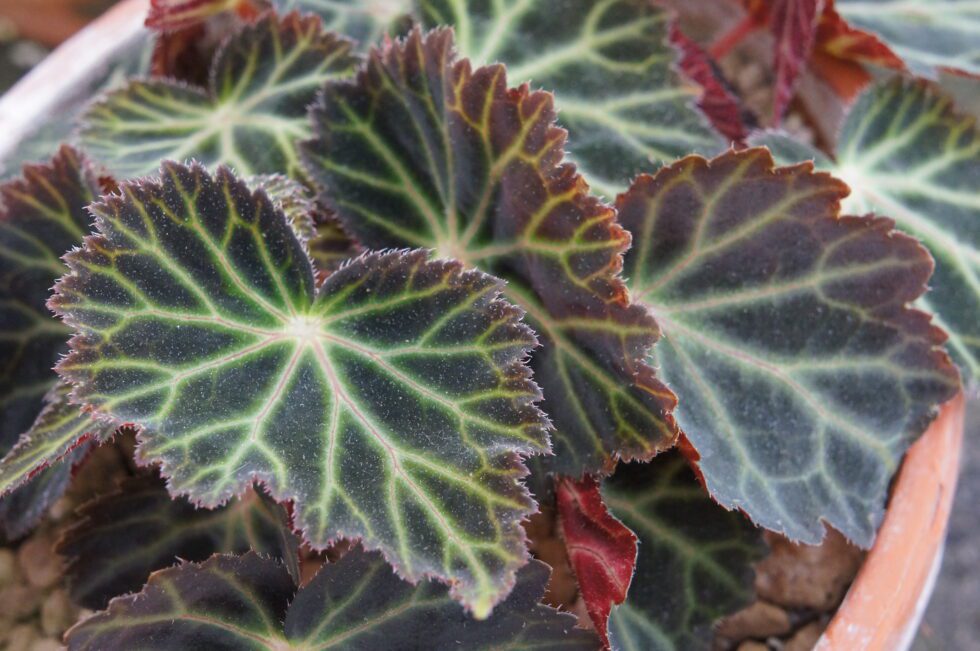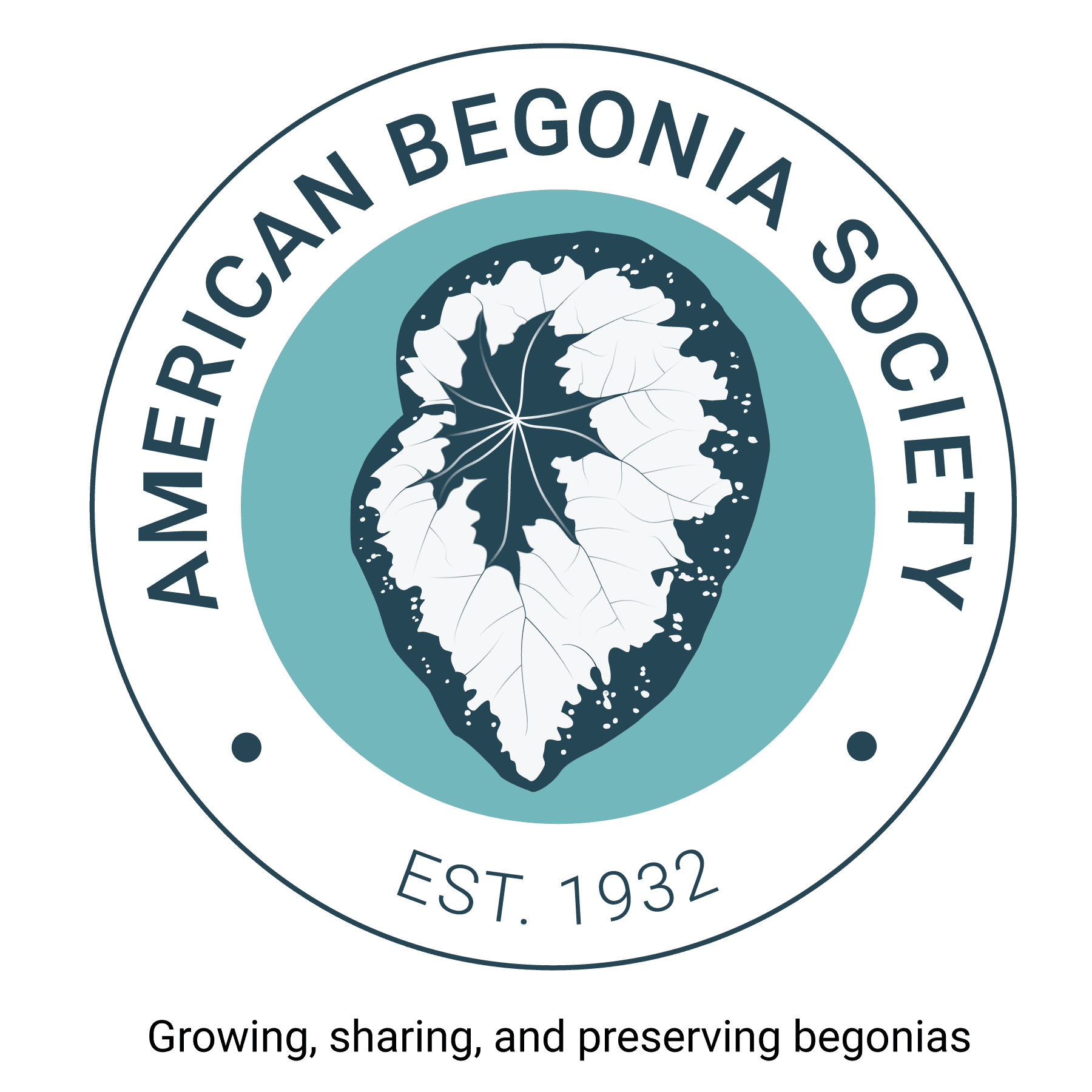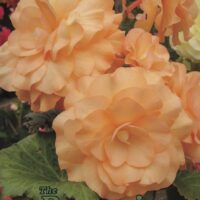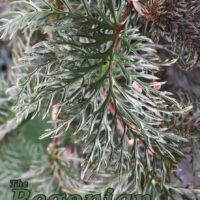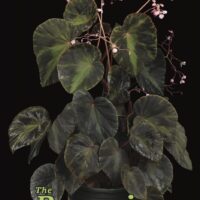The tuberous species Begonia pearcei was collected by Richard Pearce in the southeastern Bolivian altiplano in 1865. Small heart-shaped leaves are dark velvety green shot through with cream veins, reddish-purple tints to leaf undersides and bright yellow flowers held above the leaves (and in very large specimens flopping out and down past the leaves). B. pearcei is one of six yellow-flowered species in section Australes, and is featured handsomely in the new book from Mark Tebbitt, “Tuberous Begonias: A Monograph of Begonia section Australes.”
Pearce delivered the specimen to Veitch nursery in 1866 where commercial breeding ensued with several Andean tuberous species, leading to the dominance of the immensely popular and successful B. x tuberhybrida group. Initial success sprang from B. boliviensis and Veitch nursery, but it was Victor Lemoine in France that first successfully created a yellow-flowered cultivar from B. pearcei. The rate of hybridization fever proceeded so rapidly that a mere dozen years later the original Andean species were no longer the primary material for further crosses. The US entered its own phase of hybridization fervor in 1919 when import restrictions went into place; from then until recently California was the world’s second largest producer of tuberous cultivars.
Tuberous begonias dominated the world’s initial commercial interactions with begonias. Articles about how to grow, propagate and store tuberous begonias feature prominently in every issue of the first published years of The Begonian in the 1940’s – in fact B. pearcei itself was featured in the very first published issue in 1934. Despite legions of progeny still available in local nurseries, the original Andean species are somewhat rare in cultivation. All B. x tuberhybrida cultivars with yellow flowers are direct descendants of B. pearcei.
B. pearcei has not been collected often and Tebbitt’s research suggests that it is likely endemic to a very narrow location. Environs of its initial collections are 1000 to 1600 m, steep and rocky banks in deep shade of a Tucumano-Boliviano type forest (semi-deciduous, transitioning downward to sub-Andean altitudes).
